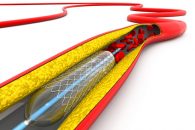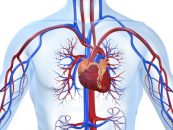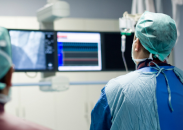Roughly one third of patients hospitalized for COVID-19 have some degree of myocardial injury and this comes hand in hand with increased mortality compared against patients with no troponin elevation. Even mild forms of myocardial injury, such as 0.03 to 0.09 ng/mL troponin elevation, is associated with close to 100% increase in mortality (HR: 1.75;…
Stenting of Lipid-Rich vs Fibrous and calcified Plaques: Different Prognosis?
Coronary PCI with contemporary drug eluting stents (DES) in lipidic-rich plaques were not associated with increased periprocedural events at long term compared against plaques with no significant lipidic composition. This study recently published in J Am Coll Cardiol looked into the association between lipidic rich plaques detected by near-infrared spectroscopy (NIRS) and clinical events in…
Non-Invasive Diagnosis of Coronary Spasm: Can We Recommend it?
Conventional non-invasive testing to detect obstructive coronary artery disease (CAD) by induced myocardial ischemia are not useful to diagnose epicardial or microvascular coronary artery spasm. Invasive testing requires the intracoronary injection of acetylcholine or ergonovine (the latter can also be endovenous). These tests are more often done in Asian countries, and rarely done in…
Is the Use of iFR for the Deferral of Left Main Coronary Artery Lesions Safe?
Deferral of left main coronary artery lesions using instantaneous wave-free ratio (iFR) seems to be safe. At the least, patients with deferred lesions had similar long-term prognosis to that of patients who underwent revascularization based on that same indicator. Left main coronary artery lesions were universally excluded from studies including medical treatment among the therapeutic…
Optimal Intervention Timing for NSTEMI with No Antiaggregant Pre-Treatment
Patients undergoing non-ST elevation MI (NSTEMI) who are not pre-treated with P2Y12 receptor inhibitors will benefit from a very early intervention strategy. The optimal intervention timing for NSTEMI patients is still under debate, despite multiple studies, but the ideal timing had never been tested in patients with no platelet aggregation inhibitor pretreatment. After the surge of…
Multiple vs. Culprit vessel MI in Cardiogenic Shock: Anything New?
The Shock Trial, the one that set revascularization as the standard strategy to treat all STEMI and cardiogenic shock lesions, had not been discussed for nearly 20 years. The CULPRIT-SHOCK was presented at TCT 2017 (and also in NEJM), and again this one study changed the standard completely, since we went back to treating only…
Estimating the Risk of Infection for Healthcare Personnel
Roughly one out of every 100 healthcare workers at hospitals receiving COVID-19 patients become infected. Statistics are not uniform for all corners of earth, and they do not indicate that being on the front line necessarily entails higher risk. A large analysis conducted in the initial epicenter of the COVID-19 pandemic (Wuhan, China) showed that 110…
Compare-Acute Sub-Study: Natural History of Non-Culprit Lesions in MI
The aim of this study was to determine the prognostic value of fractional flow reserve (FFR) of non-culprit lesions in STEMI patients. We analyzed data of all Compare-Acute patients (Comparison Between FFR Guided Revascularization Versus Conventional Strategy in Acute STEMI Patients With MVD) after PCI, from lesions assessed with FFR and treated medically. The treating…
Bleeding and Cardiogenic Shock: An “Unholy Alliance”?
Courtesy of Dr. Carlos Fava. Mortality in acute myocardial infarction (MI) with cardiogenic shock (CS) has been reduced over the past two decades. This has been possible thanks to early angioplasty, greater operator (and overall medical team) experience, new antiplatelet therapies, and ventricular assist devices, which have also been somewhat relevant in this setting. However, in…
Priorities in the Cath Lab to Escape COVID-19 Tsunami
The pandemic tsunami of COVID-19 has hit all cath lab services, especially those performing primary PCI. Passively waiting for the first patient suspected of infection only to improvise in the early hours means heading for disaster. Several scientific societies have published recommendations, but not based on clear data. It seems pertinent to bear in mind…
Covid-19 and Unaccounted Collateral Damage
Dr Metzler and collaborators carried out a retrospective search to find out the impact of the Covid-19 pandemic on diagnosis and treatment of acute coronary syndromes during March 2020 in Austria. Basically, they tried to account for the collateral damage we all imagine, but no government reports. During March we observed a significant drop in…










